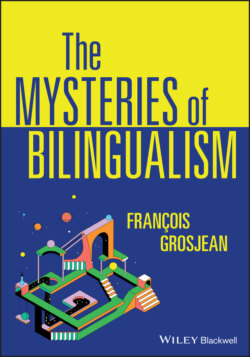Читать книгу The Mysteries of Bilingualism - Francois Grosjean - Страница 14
Language History
ОглавлениеOne can describe a bilingual at a particular point in time, as we have just seen, but one also needs to describe that person’s bilingualism over time. We need to know which languages were acquired and when, whether the cultural context was the same or different, what the pattern of proficiency and use was over the years, how much language separation or language intermingling took place, which language(s) went through restructuring under the influence of another language, and whether some languages became dormant or even entered attrition. In addition, we need to find out about the bilingual’s moments of language stability and moments of language change where a language may suddenly acquire new importance, as when a person immigrates. These transition periods, which can last several years, are important in order to understand the evolution of a person’s bilingualism.
A crucial factor in language history is the age of acquisition of each language. We need to know whether the person acquired both languages simultaneously as an infant (something that is relatively rare; see Chapter 3), or whether one language was acquired first followed by another a few years later, or in adolescence, or even in adulthood. We also want to know about the context in which each language was acquired, such in the family, outside the home, in the classroom, etc. Information is also needed as to the age at which individual skills started to be acquired in each language (speaking, reading, etc.), how many years were spent in formal learning of a language, etc.
The question of language dominance is also something to examine in a person’s language history. One should be careful not to assume that a first language or “mother tongue” is automatically the dominant language. People’s personal language history may show quite different bilingual configurations at different moments in time. Thus, Grosjean (2010) describes how his dominance has changed four times over a stretch of some fifty years, with two periods, both some ten years long, where the second language was his dominant language.
Finally, information is needed on how people became bicultural, if that is the case. Did it happen in the family when they were young children, or when they came into contact with a second culture in school, or when, as adolescents, already anchored in a culture, they pursued their studies in another culture, or even when they emigrated as adults? And information on the evolution of their biculturalism over their lifespan will also be required.
